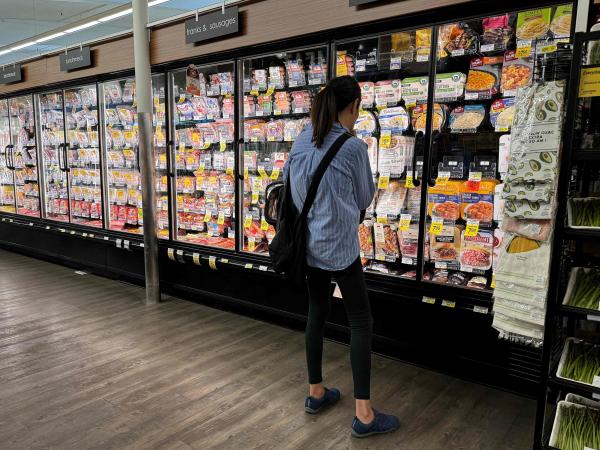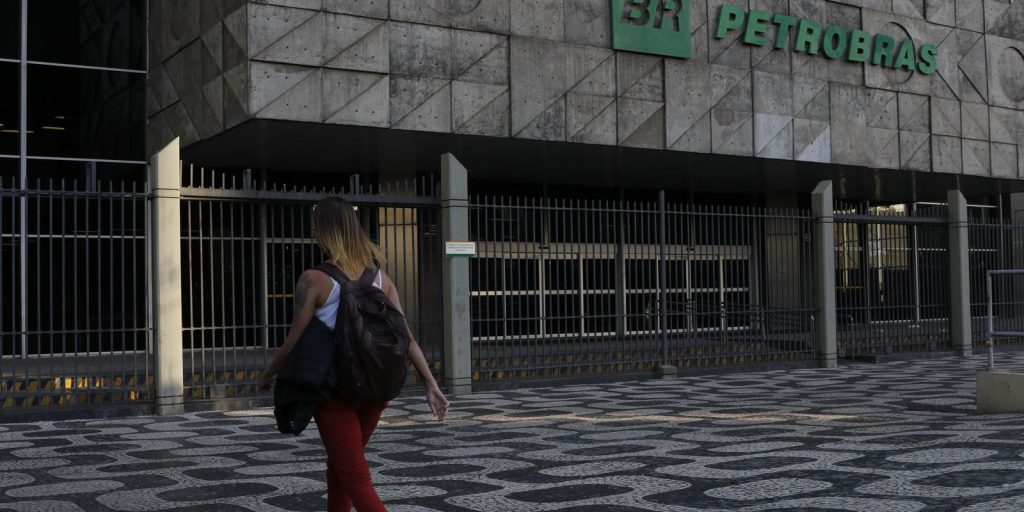The Director of the National Administrative Department of Statistics (DANE), Piedad Urdinolarevealed this Thursday the data of consumer price index (CPI) which closed the month of Julyafter the latest inflation data revealed an exit from the stagnation zone and rose by 7.18% annually.
The seventh month of the year closed with a Annual inflation rate of 6.86%likewise, with respect to the month of June, presented a variation of 0.20% and in the year to date, the figure was 4.32%.
(Further: Step by step to register for the new SENA virtual training call).
Regarding the monthly variation and contribution by expenditure divisions, Accommodation, water, electricity and gas was the one that contributed the most to the data, with 0.45 %followed by Alcoholic beverages, with 0.33%; Health, with 0.24%; Restaurants and hotels, with 0.22%; Food and non-alcoholic beverages, with 0.21%; Miscellaneous goods and services, with 0.10%; and, finally, Recreation and culture, with 0.02%.
On the other hand, the data that showed a negative variation are, in order, Information and communication, with -0.15%; Clothing and footwear and Transportation, with 0.08%; and, finally, Household goods and services, with -0.06%. The only division that reported null data was Education (0%).
Inflation
As for the annual variation, Education was the one that showed the greatest variation of all, with 11.20%, being even above the general annual variation figure for the month. The other divisions that met this criterion were, in order, Restaurants and hotels (9.07%), Accommodation, water, electricity, gas and other fuels (9.06%); Alcoholic beverages and tobacco (8.01%), and Transport (6.88%).
On the other hand, those that were below the general annual variation of the CPI for the seventh month of the year were Health (6.46%); Food and non-alcoholic beverages (5.26%); Miscellaneous goods and services (5.21%), Household goods and services (2.87%); Clothing and footwear (2.50%); and Recreation and culture (1.69%).
By contribution
As for the annual contribution for each expenditure division, Accommodation was the one that had the greatest contribution, with 2.76 percentage points (pp). This was followed by Food (1.01 pp); Restaurants and hotels (0.97 pp); Transport (0.92 pp); and Education (0.43 %).
(Further: Government advances tender and award of 4 5G projects for this year: what are they?).
Regarding the monthly variation, the director of Dane showed that, Accommodation, water, electricity and gas had greater weightwith 0.14 pp, followed by Food and non-alcoholic beverages (0.04 pp); Restaurants and hotels (0.02 pp).

Inflation
By geographic domain
Regarding the monthly variation of inflation according to geographical domains, Florencein the department of Caquetá, presented the highest, with a 0.55 %. Next come Armenia (0.47%); Pasto (0.45%); Medellín (0.35%); Neiva (0.31%); Riohacha (0.30%); Bucaramanga (0.26%); and Bogotá (0.23%).
Below the national monthly variation are Santa Marta (-0.35%); Cartagena de Indias (-0.21%); Valledupar (-0.14%); Ibague (-0.11%); Barranquilla (-0.03%); Tunja (0.02%); Monteria (0.00%); Manizales (0.12%); Villavicencio (0.13%); Pereira (0.14%) and Sincelejo (0.16%).
(Further: ‘If countries prepare, Venezuelan migration can be positive’).
The director of Dane explained that the data obtained by Florencia is explained by a monthly upward variation in the subclass of Gaswhich varied by 13.25%, translating into a contribution of 0.20 pp; followed by the Onionwith 14.11%, with a contribution of 0.08 pp
Regarding the data of Santa Martathe subclass that contributed most to its monthly data was Gaswith a variation of 2.40%, with a contribution of 0.04 pp; and Services provided in hairdressing salons, with a variation of 3.37% and a contribution of 0.03 pp

Inflation.
Regarding the annual variation, Riohacha obtained the highest figure, with the 7.91 %They are followed, in order, by Valledupar (7.81%); Sincelejo (7.50%); Bucaramanga (7.37%); Montería (7.34%); Barranquilla (7.20%); Cartagena de Indias and Cúcuta (7.18%); Bogotá (7.13%); Pereira (6.94%); Medellín (6.93%) and Armenia (6.89%).
Below the national average are Villavicencio (5.48%); Pereira (5.79%); Popayan (5.81%); Ibague (5.89%); Manizales (5.91%); Cali (5.94%); Pasto (6.24%); Santa Marta (6.56%); Tunja (6.65%); and Florence (6.76%).
A fact to pay attention to
It is worth mentioning that the analysts and study centers They have emphasized the behavior of the cost of living and the inflationary results that occurred in the months of May and June as two issues that attract attention in the domestic economic outlook.
(Read: ‘Confidence to Grow’: Petro government will hold a broad talk on reactivation).
However, The forecasts were presented in a mixed mannerFor example, a recent analysis by Alliance Values He stressed that July would be the month in which the 7% barrier that inflation has maintained would finally be broken downwards, despite the pressures that continue to come from divisions such as housing and food, thus leaving behind the upward surprise that this indicator marked in the June data.

Inflation
“According to the average estimates of analysts, monthly inflation in July is expected to be 0.29%. In Alianza, we expect a monthly inflation of 0.21%, which would bring the annual rate to 6.88%, moderating compared to the 7.18% recorded in June.“, they highlighted in said report, before the revelation of the official data.
Analysts pointed out that all divisions of the economic fabric were going to show a decline in their measurement, sustained by the favorable base effect and, particularly, in the case of food, which had been rising for three consecutive months up to 5.3% recorded in June, they projected that it would remain close to that figure.
(Besides: Bancolombia Group’s net profit falls to 1.4 billion pesos for the second half of the year).
“Increasingly lower inflation, coupled with the slowdown in the economy and the high level of the real rate, would allow the Bank of the Republic to continue with the flexibility of its monetary policy at the meeting on September 30”, the experts added.
However, in another section they mention that as long as the target range is not reached, we must continue to ‘keep an eye on’ the risks that still persist, especially from sectors such as transport and logistics costs and housing..

Inflation
“Although most of the divisions would moderate, the housing component would continue to be the monthly protagonist. We expect the annual measure to rise from 9.2% recorded in June to 9.0% in July, still high annual figures driven by the indexation of rents and pressures on utility prices.“, they indicated in the Alianza Valores report.
Reactions
The downward inflation rate for July sparked various reactions from different sectors of national politics and the economy.
One of these was the Director of the Department of Social Prosperity (DPS), Gustavo Bolívarwho is also one of the officials closest to President Gustavo Petro; who said that this data is worth highlighting considering the current situation of the global economy.
(Read: This is what Colombia’s economy will look like in 50 years, according to AI).
“Petro, who was supposed to destroy Colombia, is defeating inflation: It now stands at 6.8%, despite the global recession“, said Bolívar, in a post on the social network X.
He also called for the Board of Directors of the Bank of the Republic to speed up the reduction of the monetary policy interest rate: “Dear Banrepública: an interest rate four points higher is not justified. There is room to lower rates immediately“.

Inflation
Alexander López Maya, director of the National Planning Department (DNP)also highlighted this latest inflation figure, despite the fact that it was below the projections previously given by analysts.
“This reduction in July was less than those projected by the financial sector and sends a good message to the country about the good performance of the economy.“he said, joining the call to further reduce the intervention rate.
“We hope that the Bank of the Republic, in line with the reduction in inflation, will reduce the fixed interest rate, which is at 10.75%, in a much more ambitious way in order to further boost the reactivation of the economy.“, he said.
Juan Martin Murillo Herrera
Portfolio Journalist

















